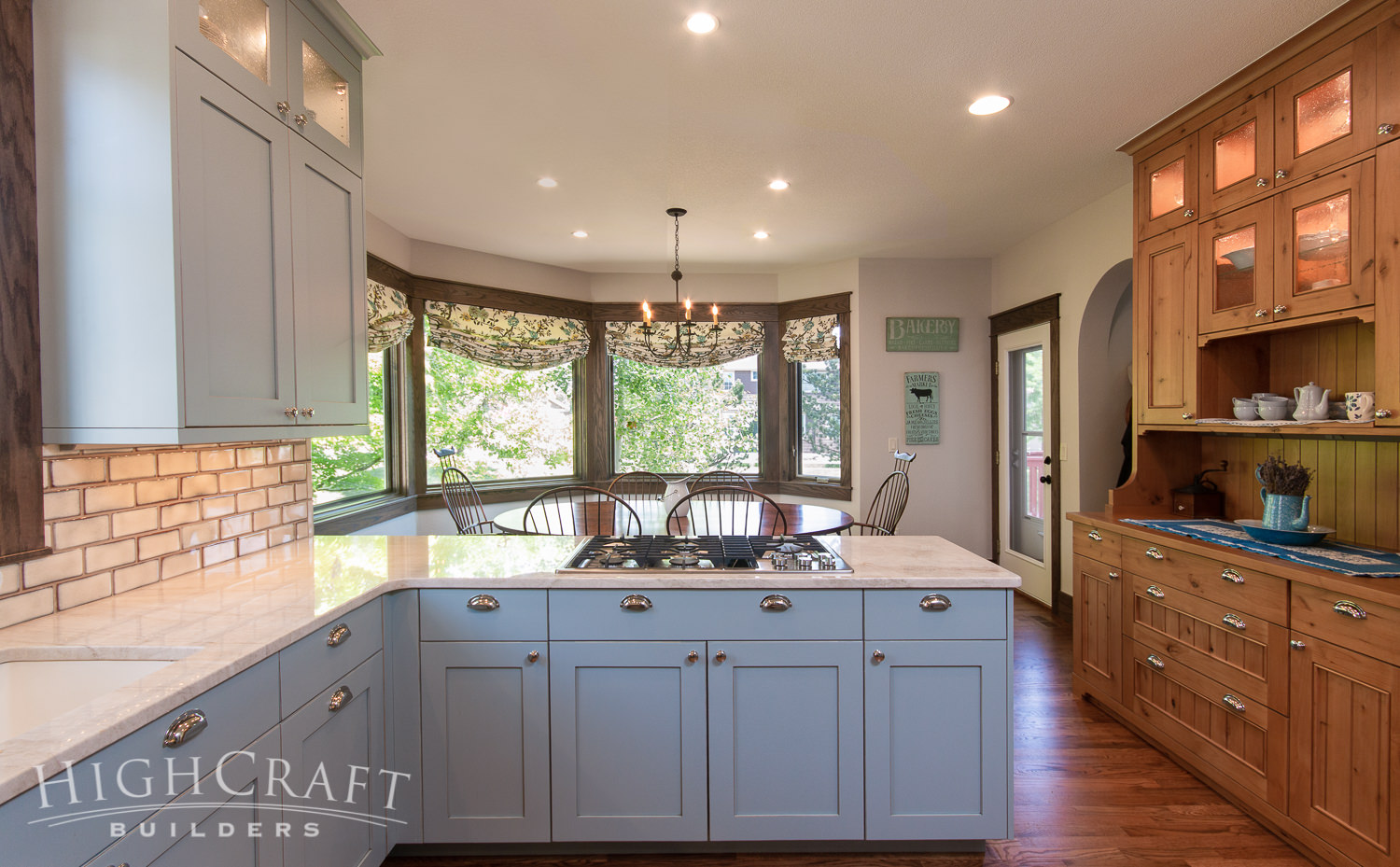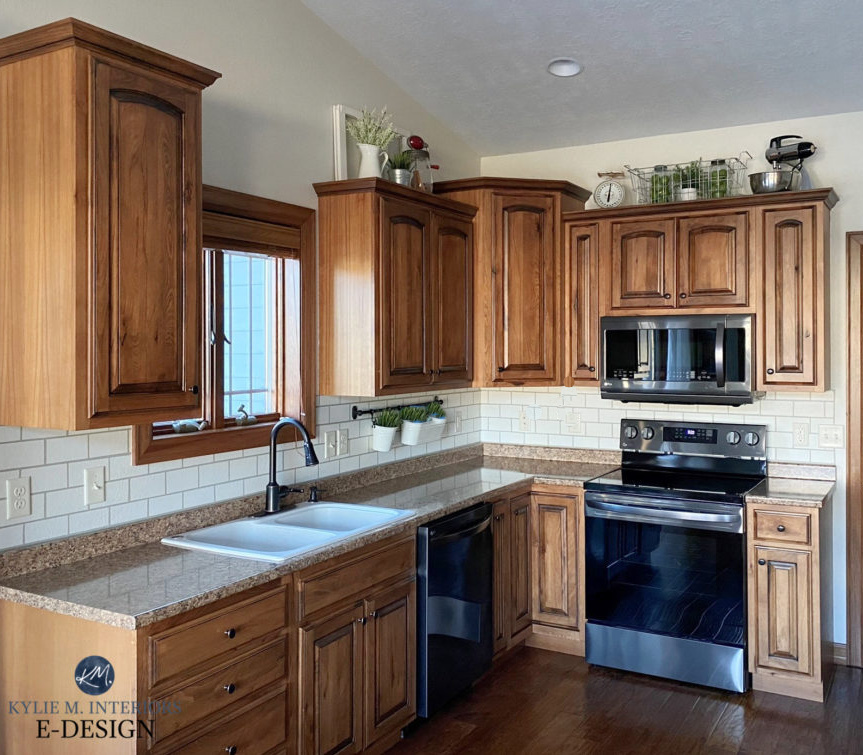Understanding Blue Wood Stain for Cabinets: Blue Wood Stain Cabinets

Blue wood stain is a popular choice for cabinet finishes, adding a touch of sophistication and personality to any space. It’s a versatile color that can be used to create a variety of looks, from traditional to modern.
Blue wood stain cabinets – Blue wood stain works by penetrating the wood’s pores, adding color without obscuring the natural grain. This creates a beautiful, nuanced finish that can enhance the wood’s natural beauty. However, the final color of the stain can vary depending on the type of wood, the application method, and the number of coats applied.
Blue wood stain cabinets offer a classic and sophisticated look that can instantly elevate any space. While they may seem like a bold choice for a small bedroom, consider incorporating a mezzanine in small bedroom to maximize vertical space.
This clever design solution not only adds a unique architectural element but also creates extra storage or even a cozy sleeping nook. The rich blue tone of the cabinets will beautifully complement the airy feel of the mezzanine, creating a truly stylish and functional bedroom.
Shades and Tones of Blue Wood Stain
The variety of blue wood stain shades and tones available allows for a wide range of design possibilities. From light, airy blues to deep, rich navy shades, there’s a blue wood stain to complement every style and preference.
- Light blues, such as sky blue or powder blue, create a calming and airy ambiance, perfect for modern or coastal-inspired kitchens.
- Medium blues, such as robin’s egg blue or teal, add a touch of vibrancy and personality to traditional or farmhouse-style cabinets.
- Dark blues, such as navy blue or indigo, create a dramatic and sophisticated look, ideal for contemporary or industrial-style kitchens.
Examples of Blue Wood Stain Cabinets in Different Room Settings
Blue wood stain cabinets can transform the look and feel of any room. Here are a few examples:
- Kitchen: Light blue cabinets with white countertops and stainless steel appliances create a clean and modern aesthetic. Dark blue cabinets with brass hardware and warm wood accents add a touch of elegance and sophistication.
- Bathroom: Teal cabinets with white subway tile and brass fixtures create a spa-like retreat. Navy blue cabinets with chrome hardware and marble countertops add a touch of drama and sophistication.
- Living Room: Light blue built-in cabinets with white trim and gold accents create a cozy and inviting atmosphere. Dark blue cabinets with black hardware and warm wood accents add a touch of elegance and sophistication.
Benefits and Considerations of Blue Wood Stain Cabinets

Blue wood stain for cabinets offers a unique and stylish aesthetic, adding a touch of color and depth to your kitchen or bathroom. It can enhance the natural beauty of the wood grain, creating a captivating visual appeal. However, like any other finish, it comes with its own set of benefits and considerations.
Advantages of Blue Wood Stain
The use of blue wood stain for cabinets presents several advantages:
- Unique and Stylish Look: Blue wood stain creates a distinctive and modern look, setting your cabinets apart from traditional finishes. It adds a touch of sophistication and personality to your space.
- Enhances Wood Grain: Blue wood stain accentuates the natural patterns and textures of the wood, highlighting its beauty and creating a visually appealing finish. This is especially effective with woods like oak and maple, which have pronounced grain patterns.
- Wide Range of Blue Hues: Blue wood stains are available in a variety of shades, from light and airy to deep and dramatic. This allows you to choose the perfect blue to complement your existing décor and create the desired ambiance.
- Cost-Effective Option: Compared to painting or other cabinet finishes, blue wood stain is a more cost-effective option. It requires less material and can be applied by homeowners with basic DIY skills.
Considerations of Blue Wood Stain, Blue wood stain cabinets
While blue wood stain offers many benefits, there are also some considerations to keep in mind:
- Uneven Staining: Blue wood stain can sometimes result in uneven staining, especially if the wood is not properly prepared. This can create an inconsistent look and require additional coats to achieve a uniform finish.
- Proper Preparation is Crucial: Before applying blue wood stain, it is essential to properly prepare the wood surface. This includes sanding, cleaning, and applying a wood conditioner to ensure even absorption and a consistent color.
- Impact on Light Reflection: Blue wood stain can affect how light reflects off the cabinets. Darker blue hues may absorb more light, making the space appear smaller and darker. Consider this factor when choosing the shade of blue.
- Maintenance Requirements: Blue wood stain requires regular maintenance to preserve its beauty and prevent fading. This may involve cleaning, reapplying sealant, and touching up any scratches or chips.
Comparison with Other Cabinet Finishes
Blue wood stain offers a unique alternative to other popular cabinet finishes, such as painting, varnishing, and lacquering.
| Finish | Advantages | Disadvantages |
|---|---|---|
| Painting | Wide range of colors, easy to apply, hides imperfections | Can cover wood grain, requires more coats, less durable than stain |
| Varnishing | Protects wood from damage, enhances natural beauty | Limited color options, can be glossy, requires more coats |
| Lacquering | Durable, glossy finish, protects against moisture | Can be expensive, difficult to apply, may yellow over time |
| Blue Wood Stain | Unique look, enhances wood grain, cost-effective | Uneven staining possible, requires proper preparation, may affect light reflection |
Applying Blue Wood Stain to Cabinets

Transforming your cabinets with a stunning blue hue requires a methodical approach. The process involves careful preparation, meticulous staining, and a finishing touch that brings out the vibrancy of the blue stain. This guide will equip you with the necessary knowledge and techniques to achieve a professional-looking finish.
Preparing Cabinets for Staining
Preparation is crucial for a smooth and even application of the stain. This step ensures the stain adheres properly and creates a uniform color.
- Clean the Cabinets Thoroughly: Remove any dust, dirt, grease, or grime using a mild detergent and water. Allow the cabinets to dry completely before proceeding.
- Sand the Cabinets: Sanding helps to create a smooth surface and allows the stain to penetrate evenly. Start with a coarse-grit sandpaper (80-120 grit) to remove any imperfections and then move to a finer grit (150-220 grit) for a smooth finish.
- Remove Dust: After sanding, wipe the cabinets with a tack cloth to remove any dust particles that could interfere with the stain.
- Apply a Wood Conditioner (Optional): A wood conditioner helps to balance the wood’s porosity, ensuring the stain is absorbed evenly. This is particularly important for woods with uneven grain patterns.
Applying Blue Wood Stain
The staining process requires careful application to achieve the desired color depth and evenness.
- Choose the Right Stain: Select a blue wood stain that complements the style of your cabinets and your desired color intensity. Consider oil-based stains for a deeper, richer color or water-based stains for a more transparent finish.
- Apply the Stain: Use a natural bristle brush or a lint-free cloth to apply the stain evenly to the cabinets. Work with the grain of the wood for a more natural look.
- Wipe Excess Stain: After applying the stain, wipe away any excess with a clean cloth. This helps to prevent streaks and uneven color.
- Allow the Stain to Dry: Follow the manufacturer’s instructions for drying time. This typically takes several hours or overnight.
- Apply Multiple Coats (Optional): If you want a deeper color, apply additional coats of stain, allowing each coat to dry completely before applying the next.
Finishing Techniques
Once the stain has dried, it’s time to seal and protect the cabinets with a finish.
- Apply a Polyurethane Finish: Polyurethane provides a durable and protective finish that enhances the color and sheen of the stain. Choose a satin, semi-gloss, or gloss finish based on your preference.
- Apply the Finish with a Brush or Sprayer: Use a natural bristle brush or a spray gun to apply the finish evenly. Follow the manufacturer’s instructions for drying time between coats.
- Sand Between Coats (Optional): Lightly sand between coats with fine-grit sandpaper (220-400 grit) to smooth out any imperfections and create a smoother finish.
Essential Tools and Materials
To successfully apply blue wood stain to your cabinets, gather the following tools and materials:
- Blue Wood Stain: Choose a high-quality stain that matches your desired color and finish.
- Natural Bristle Brush or Lint-Free Cloth: For applying the stain evenly.
- Tack Cloth: To remove dust and debris before and after sanding.
- Sandpaper: In various grits (80-120, 150-220, 220-400) for preparing and smoothing the cabinets.
- Wood Conditioner (Optional): To balance the wood’s porosity for even stain absorption.
- Polyurethane Finish: To seal and protect the cabinets and enhance the color and sheen.
- Paint Thinner (Optional): For cleaning brushes and tools after staining.
- Protective Gloves and Mask: To protect your hands and respiratory system from stain and finish fumes.
- Drop Cloths: To protect your work area from spills and drips.
Tips and Tricks for a Professional Finish
- Test the Stain: Apply a small amount of stain to an inconspicuous area of the cabinet to check the color and ensure it’s to your liking.
- Work in Small Sections: Stain the cabinets in manageable sections to avoid the stain drying too quickly.
- Use a Light Touch: Apply the stain with a light hand to avoid streaks and uneven color.
- Wipe Excess Stain Immediately: Remove any excess stain promptly to prevent it from drying and causing streaks.
- Allow Sufficient Drying Time: Ensure each coat of stain and finish dries completely before applying the next.
- Sand Lightly Between Coats: Lightly sand between coats of finish to smooth out any imperfections and create a smoother finish.
- Apply a Final Coat of Finish: Finish with a final coat of polyurethane to seal and protect the cabinets and enhance the color and sheen.
Blue wood stain cabinets offer a timeless and elegant look, but it’s important to consider the overall design scheme. A well-chosen area rug can help tie the room together, especially in a small bedroom where space is at a premium.
Choosing the right area rug can make a small bedroom feel more spacious and inviting, and can complement the blue wood stain cabinets perfectly.
